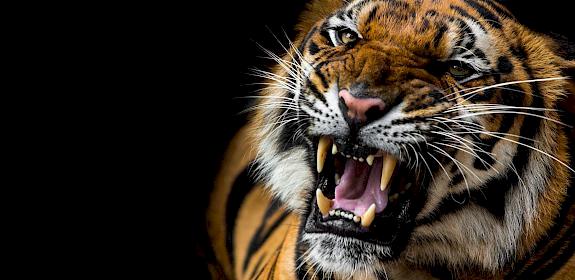World Rhino Day takes place on eve of critical wildlife trade conference
Johannesburg, South Africa, 22nd September 2016—as the world marks World Rhino Day, delegates from more than 180 countries are arriving in South Africa for a critical wildlife trade meeting where the international efforts to address record poaching levels of Africa’s rhinos will be one of many issues under close scrutiny.
A status report by TRAFFIC and IUCN prepared to inform decision makers attending the Convention on International Trade in Endangered Species of Wild Fauna and Flora (CITES) meeting revealed a record 1,342 rhinos were poached in Africa last year.
“This crucial meeting of CITES Parties must be the rallying point for the international community to support and assist rhino range States in ending this global poaching crisis,” said Sabri Zain, TRAFFIC’s Director of Policy.
Among the measures needed are effective implementation of updated legislative measures aimed at tackling illegal trade in rhino products in Mozambique and Viet Nam, two of the countries most heavily implicated in the rhino poaching crisis. Viet Nam as a major consumer of rhino horn also needs to step up its efforts to discourage the use of horn through targeted consumer behaviour change measures.
Another of Africa’s iconic mammals experiencing heavy poaching pressure, the African Elephant will also be high on the CITES agenda. Around 20,000 to 30,000 are being poached each year for their ivory, which is smuggled mainly to countries in Asia.
Counter Proposals to amend the Appendix listings in CITES for African Elephant populations (effectively to clear the way for future legal ivory trade or bar it) are on the table. However, TRAFFIC hopes that the main focus and attention of Parties will be on efforts to address poaching and illegal ivory trafficking, particularly through the CITES-led National Ivory Action Plan (NIAP) process.
The NIAP process has resulted in many positive actions being taken by a wide range of players but implementation is still very much at a nascent stage and for it to have a lasting impact, there must be renewed scrutiny and review of the various Plans to ensure they are meet all their objectives
Sabri Zain, TRAFFIC’s Director of Policy
Thailand in particular has made commendable progress in meeting its obligations under CITES to regulate any domestic trade in elephant ivory, but a number of other key countries still have not reached the essential starting point of having the basic legislation in place to support aggressive law enforcement and impose meaningful penalties on offenders, while key improvements are needed in international enforcement collaborations.
The plight of pangolins or scaly anteaters, populations of which are believed to be in sharp decline across Africa and Asia because of illegal harvesting for their meat and scales will be another high profile species during the CITES meeting. All eight species—four each in Asia and Africa—are proposed for listing in Appendix I. Declines of Asian species have been so rapid that African species too are now being targeted for this trade andTRAFFIC considers such an Appendix I listing for all species is warranted it will only be effective if backed up by appropriate actions to support it.
At the last such CITES meeting in March 2013, a number of commercially fished shark and ray species were listed for the first time in the Appendices. The current meeting provides an opportunity for Parties to review how to implement those listings more effectively, in particular how to ensure there is legal acquisition of shark products and their traceability within the trade chain. TRAFFIC has provided guidance documents on each of these aspects while Parties will have the opportunity to vote on listings for further shark and ray species.
Other key items on the CITES agenda over the coming fortnight include the thorny issue of corruption and how to deal with it, captive breeding—and in particular dealing with the laundering of wild caught specimens as “captive bred”, and progress made by Parties in introducing and implementing appropriate legislation to implement CITES measures at the national level.
“The next two weeks will be a critical time for shaping how CITES Parties address wildlife crime but encourage and support legal and sustainable wildlife trade,” said Zain.
“Above all, we trust Parties will take decisions after fully taking into account the best possible scientific evidence at their disposal.”





